Health
Consuming This Food Could Help Some People Live to 100 Years Old
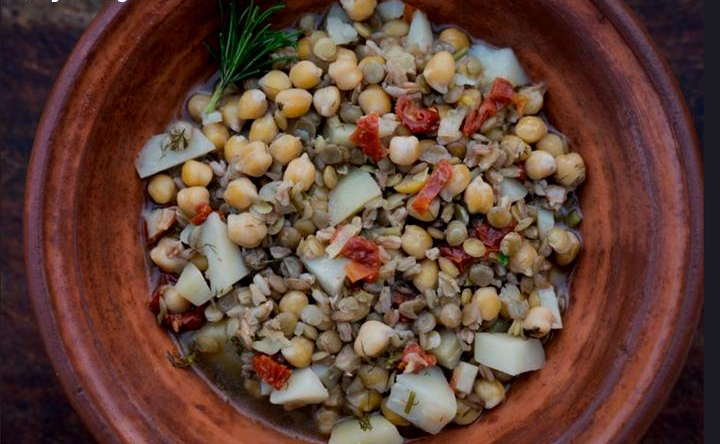
Beans, beans, the magical … longevity food? True, these tiny, unassuming morsels are filling and nutritious, and as a basis of a plant-based diet, good for the planet as well. But how could the family of legumes — which includes beans, peas, lentils and chickpeas — help us live longer?.....Read Full Article>>
“In every blue zone I have visited, beans and other legumes were — and still are — a major component of the daily diet,” said author and entrepreneur Dan Buettner, who has spent decades reporting on “blue zones,” unique communities around the globe where people live long and heathy lives, up to and past 100 years.
Residents of these areas share a common environment and lifestyle — including a plant-based diet — that scientists believe contribute to their longevity.
Blue zones have been discovered in Ikaria, Greece; Okinawa, Japan; Nicoya, Costa Rica; Loma Linda, California; and the Italian island of Sardinia, just off the coast of Italy.
In Sardinia, where one of the first groups of centenarians was studied, garbanzo and fava are the legumes of choice, Buettner said.
Also known as chickpeas, garbanzos are the prime ingredients of a minestrone that is usually eaten at more than one meal, allowing the residents of Sardinia to get the benefits of beans at least twice a day.
The recipe was given to Buettner by one of the three brothers and six sisters of the Melis family of Perdasdefogu, Sardinia, which he said is the “longest living family in the world.”
“There are nine siblings whose collective age was 851 years,” Buettner said. “Every day of their life they had the exact same minestrone with sourdough bread and a small three-ounce glass of red wine.”
Why beans?All members of the legume family are full of nutrients, including copper, iron, magnesium, potassium, folic acid, zinc, lysine, which is an essential amino acid, and lots of protein and fiber.
“Fiber rewards you with a healthy gut microbe and lower inflammation and better immune function, said Buettner, noting that “only 5% to 10% of Americans get the fiber they need.”
Each type of bean has a different nutritional profile, so eating a variety of beans may be best, Buettner said. Aduki, or the red mung bean, has more fiber than many other varieties, while fava beans are packed with the antioxidant lutein.
Black and dark red kidney beans are full of potassium and chickpeas have lots of magnesium.
“Beans are also packed with plant protein, which is healthier because it has more nutrients with fewer calories than animal protein,” he added.
In fact, Buettner said, pair beans with whole grains and you have all of the amino acids that make up a nutritionally whole protein — similar to what is found in meat.
In Nicoya, Costa Rica, for example, people might begin their day with Gallo Pinto, the country’s national dish, Buettner said.
“It’s a combination of beans cooked down to a gravy, seasoned with onion, green pepper, and some aromatics like basil or thyme and maybe garlic,” he said.
“Then they mix in yesterday’s white rice. That’s interesting because by cooling overnight the rice undergoes metamorphosis,” Buettner said.
“The starch in the rice becomes resistant, which means the body absorbs it more slowly, so your blood sugar doesn’t spike as high.”
And while the purple potato is historically credited as the primary longevity staple for the people of Okinawa, Japan, the second most prominent food in their diet is soybeans, Buettner said.
“The Okinawans are eating tofu, often with every meal, so it’s like their bread,” he said. “Usually, a breakfast will be really chunky miso soup with chunks of tofu — but they don’t cut the tofu into cubes like we do, they break it so it can better absorb flavors.”
Good for the body and the walletStudies point to the health benefits of beans, backing up what people in blue zones have long known, Buettner said.
The soluble fiber in beans can cut cholesterol and help prevent type 2 diabetes by stabilizing blood sugar.
A 2001 study found eating beans four times a week cut heart disease by 22%. A 2004 study found people lived approximately eight more years for every 20-gram intake of legumes — that’s about an ounce.
Beans even help with weight loss — a 2016 review of studies found people who ate up to 9 ounces of beans each day over six weeks lost three-quarters of a pound more than people who didn’t eat beans.
In addition to all of these benefits, beans and their cousins are also cheap to purchase and can be grown at home in a variety of soils, making them the perfect food to help economically disadvantaged populations live longer, Buettner said.
“Most of my day job for the past 13 years has been working with cities to help lower obesity,” he said, referencing the Blue Zone Project, community transformation programs that have helped Americans in cities such as Spencer, Iowa, and Beach Cities, California.
“I always hear American families cannot afford to feed their families healthy food,” Buettner said.
“That’s unfortunately true when it comes to organic and other fresh foods, but I tell them they can still get most of the way there by making beans and whole grains the basis of many meals.”
OK, fine, beans are good for us. But how do we deal with the, uh, uncomfortable and sometimes loud and smelly result?
“If you want to avoid gas, the way to start with beans is with a couple tablespoons a day,” Buettner said.
“Then you go up to four tablespoons and over the course of two weeks you work yourself up to a cup.
“Now you’re feeding the good bacteria in your gut and your microbiome is ready for it,” he added. “I have no gas at all from eating beans.”
Sardinia Minestrone SoupJohn Buettner prefers to use dried beans for this classic, hearty dish. Soak all three legumes overnight ahead of making the soup.
The cooking time will depend on how fresh they are. “The older the bean, the longer it takes for them to cook,” he said.
Makes 8 generous servings
Ingredients
·⅓ pound dried garbanzos (¾ cup)
·⅓ pound dried white beans (¾ cup)
·⅓ cup dried pinto or red beans
·4 to 6 stalks celery
·1 ½ cups potatoes
·4 to 6 carrots, preferably organic
·1 medium onion, white or yellow
·2 teaspoons extra-virgin olive oil
·4 to 8 cloves garlic, chopped
·1 teaspoon red pepper flakes or freshly ground black pepper
·Low-sodium vegetable stock (optional)
·1 14-ounce can chopped or stewed tomatoes
·1 tsp. red or black pepper (red makes it hotter, Buettner warns)
·1 teaspoon dried oregano
·1 bay leaf
·Salt to taste
·Freshly sliced avocado for serving
·Freshly grated Parmesan for serving
Instructions1. Drain the presoaked beans in a colander and microwave them in a separate bowl of water for 10 minutes — about the amount of time you need to chop the celery, carrots and onion into approximately ½-inch pieces.
2. Add olive oil to a large pot over low heat and sauté carrots, celery, onion, garlic and pepper flakes and garlic until the onion pieces are translucent, about 3 minutes.
3. Rinse and drain the beans in a colander and add to the same pot containing the aromatics, along with 6 to 8 cups water. Use vegetable stock instead of water, if desired. Add the tomatoes, potatoes, oregano and bay leaf and slow cook over low heat until beans are tender, 1 to 1 ½ hours. Season with salt.
4. When ready to serve, top with sliced avocado and/or Parmesan cheese,
Short on time? For quicker soup, Buettner suggests using a pressure cooker for 25 minutes — except for lentils, which only take about 5 minutes. He prefers to bring the pressure cooker to peak pressure — about when it “starts to whistle,” he said, then turn it off and let it cool down naturally.
Let the flavors meld. In addition, “this minestrone tastes best the next day, as all of flavors combine,” Buettner said. “If you want to store it more than 2 days, it’s better to freeze it.”
Health
JUST IN: Wife vows revenge after husband of 5 years infects her with HIV

A Nigerian wife has taken to the social media platform X, formerly known as Twitter, to reveal her plans for revenge after her husband of five years allegedly infected her with HIV.....Read Full Article>>
The anonymous post detailed her grievances and the drastic steps she intends to take in response to the betrayal. According to the woman, she has been married to her husband for five years, and they share two children.
She claimed to have made significant sacrifices for her husband, including giving him her first ₦5 million earnings. Despite her efforts, she discovered that her husband cheated on her and infected her with the virus.
In her post, she outlined her plans to change all the property documents, including those jointly purchased and solely in his name, to her name.
She also disclosed her intention to leave the country with their children next year, never to return, and without informing her family, who previously advised her to remain in the marriage despite her husband’s infidelity.
The wife wrote: “This man I married gave me HIV within just five years of marriage. I built with this man and gave him everything, including my first ₦5 million. Despite all that, this is how he repaid me. Once I change all the property documents to my name—including those I bought for him and the ones we bought together—he’ll be back to square one.”
“I would have infected all his family members, but instead, I’ll make sure he suffers a stroke. I’m leaving the country with my two children next year, never to come back, and I won’t tell anyone, including my family. They all advised me to stay with him when I found out he was cheating. When we were broke, this man didn’t cheat, but after I supported him, this is my reward.”
The post sparked a flurry of reactions, with many concerned individuals taking to the comments section to share their thoughts on her plight and plans.
See some reactions below:
@popterai:
“Some men na disappointments… May God be with you babe.”
@revi_ofthehills:
“She should play her own game. He deserves it. But she should leave his family members out of it. I know she’s hurt but no be their fault.”
@ogocyndy2:
“This is really sad. I could feel her pains. Omo do to him as you please, he is w!cked.”
@MercyAgera:
“Take it easy on you dear, just leave and don’t add to his troubles. The Lord is watching let HIM be the judge.”
@XlChyno:
“Wow, some things I see here got me wondering. Its crazy out there.”
@Cappucchino443:
“Men supporting men. This is so sad. Omo imagine say na your sister. You go advise your sister to forgive him? You ma shey you go forgive the man?? Abeg make we no dey comment rubbish for here. Na HIV ooo.”
@ancientPATHH:
“This is evil. No woman who truly built with a man should go through this. If someone stayed, believed and grew with you, you should also make sacrifices for them.”
@Divaisabeauty:
“Nigerian men are the worst when they are with Nigerian women. The moment they see white skin they become ice cold, cos they know even before divorce and sharing of his property, gun fit each him body. Marrying a Nigerian man is =endurance, patience and long suffering.”
SEE POST:
Health
Heal Your Knees And Rebuild Your Bones And Joints With This Powerful Mixtures
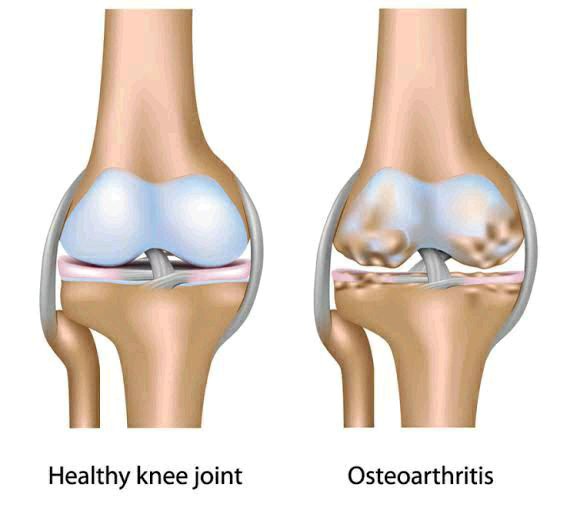
It is a widely held belief that once your joints begin to get more unstable, there is no way to stop the interaction from taking place even if you try your hardest. In most cases, the purpose of treatment is to alleviate the patient’s suffering as much as possible, bring down their overall level of irritation, and halt the advancement of the condition.....Read Full Article>>
The medications that are used to achieve this can be quite effective; however, they also carry the risk of unintended side effects such as acid reflux, stomach ulcers, damage to the liver or kidneys, and an increased risk of coronary events.
This is because these medications carry the potential for adverse reactions.
Our bodies are susceptible to experiencing irreparable damage over time as a result of the general wear and tear that we put on them on a daily basis, and as a consequence, we often endure agony and suffering as a result of this. Because of this, our joints have become less flexible, and we frequently experience pain and discomfort in them, particularly in the knees. In particular, our knees are particularly susceptible to this condition. The development of joint pain can be brought on by a variety of different circumstances, such as aging, injuries, or an unfavorable body position, and it can bring about a great lot of suffering and trouble in daily life. This problem needs to be fixed as early as humanly possible in order to avoid creating any additional issues. Despite this, there is a natural therapy that can be utilized that is an excellent remedy for the aggravation that is felt in the knees, and it is a treatment that can be used.
The following is the recommended configuration for it:
To make this recipe, you will need three tablespoons of chopped raisins.
40 grams of pumpkin seeds taken from inside the pumpkin
2 tablespoons of unflavored gelatin in the tablespoons.
a quantity of sesame seeds that is equivalent to four tablespoons.
200 milliliters of honey. Honey.
flaxseed meal equivalent to 8 tablespoons
In order to get everything ready, all you have to do is throw all of the ingredients into a blender and give it a good whirl until everything is combined. After that, the mixture is poured into a glass jug, and after that, it is placed in the ice chest to be kept cold.
Detailed, easy-to-follow instructions on how to make and use:
You must take in one spoonful of the combination at each of your two regular meals. The first time should be done first thing in the morning on an empty stomach, and the second time should be done first thing in the morning before lunch. Because of this syrup, digestion will become more efficient, and the bones and joints will have a more robust feeling. You will see major gains in a very short amount of time, and this wonderful end is a result that is certain to occur.
Gelatin
The primary components of gelatin are the proteins that are extracted from skin, tendons, and bones. It is used as a thickening agent in a broad variety of different food preparations, which is one of its primary functions. Collagen, which is one of the fundamental structural components of bone and ligament, can be found in rather high concentrations in this substance. It may be helpful in the prevention of mileage and the protection of the joints.
Honey The high cell reinforcement content of honey has a mitigating effect, and this effect can be seen. Honey’s high cell reinforcement content. Honey serves, more or less, as the sweet base for this recipe and possesses the typical additive capabilities. Honey can also be used as an ingredient.
Health
These 6 Fruits Can Improve Your Vision If Consumed Daily

We often underestimate the prevalence of the ailment known as poor vision. We are inclined to attribute it to the abrupt rise in the use of mobile phones, longer working hours spent in front of computers, or excessive time spent watching television.....Read Full Article>>
These factors do have an effect on one’s vision, but we mustn’t ignore the fact that there is also another significant factor that plays a role in the degeneration of one’s eye health.
A considerable impact can also be had on one’s vision if they are malnourished or undernourished. Just like the rest of our bodies, our eyes need a certain amount of nourishment in order to work effectively.
It is essential to incorporate foods into our diet that have the potential to have a positive effect on our eyes because they take in such a large amount of what we eat. Some fruits have more beneficial nutrients for the eyes than others, but fruits in general are a treasure trove of nutrients, and fruits in particular are a rich source of these nutrients. Because there are so many different kinds of fruits available, it can be difficult to decide which ones are best for your eyes.
The following is a list of fruits that are said to be good for the health of your eyes:
1. Mango
This delicious summer fruit is rich in vitamin A, an antioxidant that guards against bacterial infections and disorders that can affect the surface of the eye. Dryness and clouding are both symptoms of a deficiency in vitamin A, which puts the health of the eyes in jeopardy.
2. Apricots
This fruit has a significant amount of beta-carotene, an antioxidant that has been shown to retard the aging process of the eyes. Apricots also include a wide range of other minerals, such as zinc, copper, vitamin C, and vitamin E, which all contribute to the prevention of macular degeneration when combined with one another.
3. Blueberry
The fruit with a sweet and tart taste has potent anti-inflammatory properties and the ability to regenerate rhodopsin, both of which are beneficial to the blood vessels in the eyes. The presence of anthocyanins in this fruit contributes to the maintenance of open retinal arteries.
4. Papaya
A wonder food that is beneficial to overall eye health is papaya since it contains a high concentration of minerals, antioxidants, and enzymes.
5. Orange
In terms of the concentration of vitamin C, which has been shown to play a role in the prevention of cataracts, it ranks first among citrus fruits. Additionally, the high water content of this fruit ensures that the eyes remain hydrated.
6. Avocado
Avocados, thanks to the high levels of the compounds lutein and zeaxanthin that they contain, are beneficial for enhancing night vision and protecting the eyes from the negative effects of UV light
Health
Frequent s£x doesn’t reduce prostate cancer, experts warn

Medical experts have raised the alarm over the increasing cases of prostate cancer across the country, advising Nigerians to always seek medical attention on time.....Read Full Article>>
The experts, who spoke to Saturday PUNCH at a recently concluded 29th Annual General Meeting and Scientific conference of the Association of Urological Surgeons, Nigeria, held in Enugu, dispelled the notion that frequent sex reduces prostate cancer or prostate enlargement in males, describing it as a fallacy.
Though a Consultant Urologist and Head of Surgery Department at the Lagos State University College of Medicine, Prof Omisanjo Oluwafunmilade, encouraged men to be sexually active as much as they can, however, noted that “it is a fallacy to assume that you are able to have sex these number of times in a week, in a month or in a year, you will not develop prostate cancer”.
He noted, “There are studies that are suggesting that men who have frequent ejaculations have a slightly lower risk of developing prostate cancer compared to men who have less frequent ejaculations. But we also know that some other studies have found this not to be true.”
He emphasised that even if there’s any benefit in whatever protective effect one may get by frequent ejaculation, it could always be ruined by other factors, including genetics.
“So we encourage men to be sexually active in a healthy relationship as much as they can but it is not correct that once you have a particular amount of ejaculations or sexual exposure, you will not develop prostate cancer.
“Data has not consistently shown that. There are studies that suggest it may be protective; other studies have not confirmed that,” Oluwafunmilade stated.
He said that the number of prostate cancer cases that have been diagnosed in Nigeria has increased in all regions across the country. “Prostate cancer is more common or to correctly put, it is diagnosed more commonly now compared to before,” he disclosed.
Similarly, a Consultant Urologist at the University of Ilorin Teaching Hospital, Dr Oseni Ismaila, stated that prostate issues could be treated more especially when the patients present themselves in the hospital early.
He said it was not true that frequent sex prevents prostate cancer or prostate enlargement because there was no confirmed scientific basis for that.
“There’s a presupposition that it is either as a result of family lineage or some ongoing changes in the body. All men are at risk of developing an enlarged prostate – whether just an enlarged prostate or prostate cancer all men are at risk.
“The only man that is not at risk is the one who is castrated when he is a small boy, otherwise anybody that has two balls is at risk of developing an enlarged prostate at any time,” he stated.
Health
Exceptional Benefits Of Boiling Guava Leaves And How To Use

Guava leaves are an excellent source of natural compounds that have been used for centuries in traditional medicine for their various health benefits. These leaves contain essential nutrients, antioxidants, and anti-inflammatory properties that can help treat a wide range of illnesses. One of the most popular ways to use guava leaves is by boiling them and drinking the water. In this article, we will discuss the benefits of boiling guava leaves and drinking the water.....Read Full Article>>
1. Promotes Weight Loss
Guava leaves are rich in fiber, which helps in promoting weight loss. Drinking guava leaf water can help regulate digestion, increase metabolism, and reduce appetite, which can help you lose weight naturally.
2. Boosts Immunity
Guava leaves contain high levels of vitamin C, which is known for its immune-boosting properties. Regular consumption of guava leaf water can help boost your immunity and prevent various diseases.
3. Lowers Cholesterol
Guava leaves contain compounds that can help lower cholesterol levels in the blood. Drinking guava leaf water regularly can help reduce LDL (bad) cholesterol levels and increase HDL (good) cholesterol levels, which can help reduce the risk of heart disease.
4. Controls Blood Sugar Levels
Guava leaves contain compounds that can help regulate blood sugar levels. Drinking guava leaf water regularly can help reduce the risk of type 2 diabetes and improve insulin sensitivity.
5. Relieves Menstrual Pain
Guava leaves contain compounds that have anti-inflammatory properties that can help reduce menstrual pain. Drinking guava leaf water regularly can help alleviate cramps and other symptoms associated with menstruation.
6. Reduces Stress
Guava leaves contain compounds that can help reduce stress and anxiety. Drinking guava leaf water regularly can help promote relaxation and improve overall well-being.
7. Improves Skin Health
Guava leaves are rich in antioxidants that can help improve skin health. Drinking guava leaf water regularly can help reduce the appearance of wrinkles, fine lines, and other signs of aging.
Boiling guava leaves and drinking the water is an easy and effective way to reap the benefits of this natural remedy. Regular consumption of guava leaf water can help promote weight loss, boost immunity, lower cholesterol, regulate blood sugar levels, relieve menstrual pain, reduce stress, and improve skin health. However, it is important to consult a healthcare professional before adding guava leaf water to your diet, especially if you have any underlying health conditions or are taking any medications.
Health
Dear Ladies, See The Easy Ways To Lighten Your Inner Dark Thighs
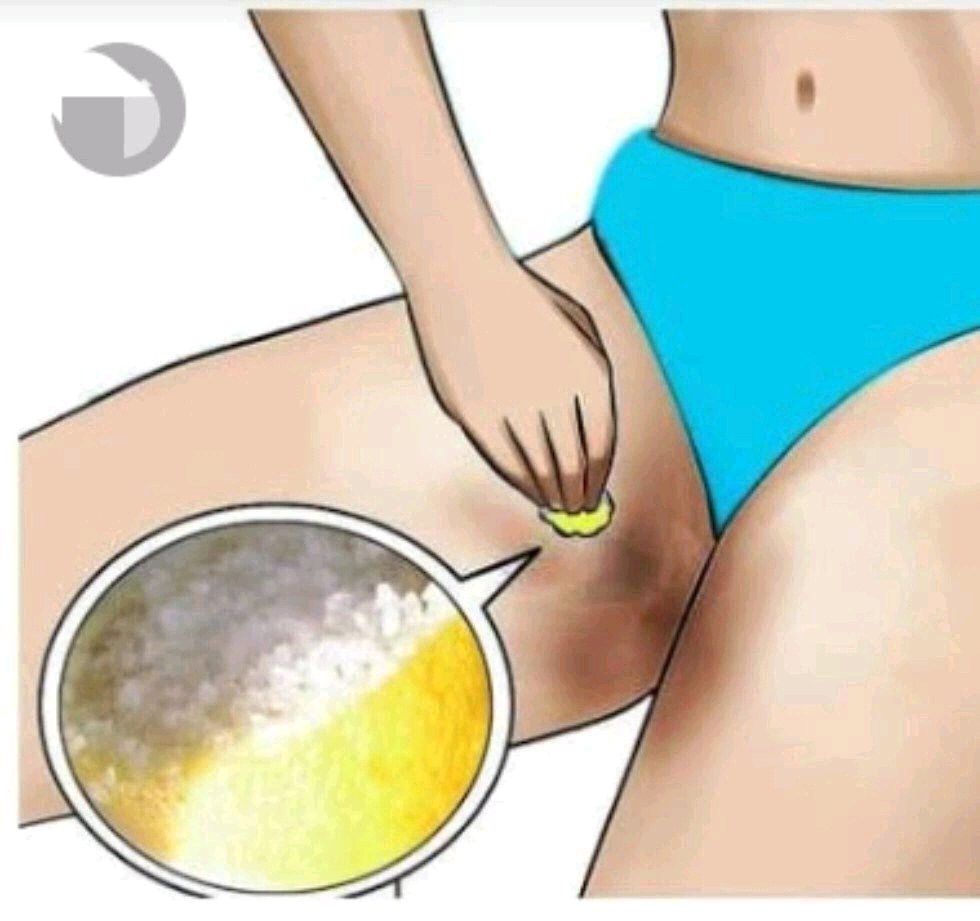
With regards to being a woman, something that is generally vital to us is our body, and we make every effort to keep it flawless and immaculate consistently. With regards to being a woman, our bodies are something that are mean quite a bit to us. Each lady has a similar desire: to have a body that she can be pleased with, and to have the option to say that she is calm in her own skin. This is a general objective for all ladies.....Read Full Article>>
At the point when individuals come to see us, the most well-known issue they have is that they have dull inward thighs or a dim swimsuit line, the two of which can rather humiliate. We can treat both of these issues. As an immediate consequence of this, numerous ladies have created sensations of disquiet, and subsequently, they continually want to disguise themselves. As an immediate result of this, numerous ladies have created sensations of disquiet.
1. In the event that you are overweight, you have a more serious gamble of creating dim inward thighs due to the expanded contact that happens between your laps. The skin obscures because of the erosion, which is the justification for this peculiarity.
2. An adjustment of the shade of the skin might happen because of inordinate perspiring, especially when this condition is joined by the wearing of cumbersome dress.
3. Since over-shaving can cause staining, you ought to attempt to try not to do it in that specific region and on second thought utilize a hair evacuation treatment all things considered.
Guidance for drawing out the shapes of the internal thighs
1. Cucumber
Subsequent to cutting your cucumber, quickly apply the uncovered tissue of the cucumber to the impacted locale and let it there for a couple of moments prior to washing it off with water. On the off chance that you need the best impacts conceivable from this training, you ought to perform it two times per day, once in the first part of the day and once in the prior night heading to sleep. Your skin will indeed resemble being sound.
2. A piece of the strip of an orange
Notwithstanding the notable job that it plays as a fading specialist, the strip of an orange can likewise be used as an exfoliant for the skin. To make a glue out of the orange strip, you should simply accept the strip, permit it to dry totally prior to crushing it, and afterward join the ground strip with some honey and water. Presto! You currently have a glue out of the orange strip.
You ought to wash this glue off after first applying it to the impacted locale, allowing it to sit for a couple of moments, and afterward eliminating it from the impacted region. Continuously do your exercises in this design consistently.
3. Aloe vera is one more kind of normal fixing that can ease up the skin. Subsequent to cutting the aloe vera plant fifty, scratch the gel out of the center of the plant, and apply it to the area that should be peeled. Subsequent to saving it for a couple of moments, you ought to give the locale a total cleaning.
4. Lime
Lemon, similar to orange, can be utilized to shed the skin; essentially apply the juice to your skin and wash it off following a couple of moments. Orange is one more natural product that can be utilized in a similar way. Orange is one more organic product that can be used in a similar way as recently portrayed.
5. Tomatoes.
In the wake of cutting a tomato down the middle and applying the juice to the impacted region, clean up following a couple of moments have passed. Tomatoes are a characteristic solution for an assortment of skin conditions.
Health
When Your Heart Is In Danger Your Body Will Give You These 11 Signs
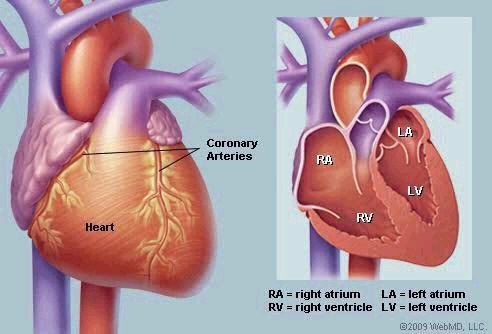
The following are the indications:....Read Full Article>>
1. The inconvenient nature of the interior of the Chest.
When a notification in the chest causes you inconvenience, you should acknowledge that there is an issue. The muscle was under tension. Unrelenting chest pain can be brought on by a weakening of the muscle mass and ligaments across the edges, and I will demonstrate the state of my heart in this paragraph.
2. Excruciating pain in the stomach and illness.
Complaints, intestinal pollution, strain, and discomfort, as well as chronic gastrointestinal issues, may be present. In most cases, queasy stomach and feelings of sickness are only temporary and resolve on their own.
3. The pain that spreads from the chest to the arm is another indication that the coronary heart is a source of danger.
4. some words of advice
Your tips may be an indication that there are problems with your bloodstream. Your brain need oxygen-rich blood in order to maintain its ability to be flexible. Otherwise, you run the risk of becoming unstable or possibly passing out.
Blood clots, blocked blood vessels, an unhappy heart, and irregular heartbeats are some of the factors that might contribute to a blood supply that is inadequate to the brain.
5. an issue with the throat or the jaw
Glossopharyngeal neuralgia is a painful condition that can be brought on by an illness that affects only a portion of your throat after swallowing, known as “gulping wake.”
This ailment can manifest itself on one side of the ears, and it can be traced back to the tongue, tonsil, or jaw. This is a rare circumstance, which has the potential to produce rapid and intense suffering.
6. Engineering.
a temporary weakening or deterioration of organs, tissues, or cells following an unneeded attempt or provocation.
7. Snoring while you sleep at the same time.
Wheezing can be caused by a number of different things, including but not limited to the oral and sinuse systems, the consumption of alcoholic beverages, sensitivity, cold, and weight.
While you are resting and gradually moving into a deeper state of relaxation, the muscles inside of your mouth, including those that are sensitive to flavor, as well as your tongue and throat, relax.
8. Persistent and Excessive Sweating
Diabetes can cause damage to nerves, and as a result, certain people are “infected” continuously by the nerves that manage their sweat organs. This could result in hyperhidrosis, which is an abnormally high level of sweating.
9. A long and drawn-out cough.
There are a variety of circumstances that may warrant a cough waiting interval.
10. The length of the legs, toes, and legs is reduced.
Sometimes a sickness will manifest itself, such as one that affects the heart, liver, or kidneys.
If your lower legs swell up during the night, it could be a sign that your right coronary heart isn’t doing a good job of holding on to salt and water. Gravity causes fluid to mix more in the feet and lessens the amount of fluid in the legs, but fluid can also build in the center of the body and in the chest.
a racing or fluttering sensation in the heart
The majority of the time, they are brought on by anxiety and discomfort, but they can also be brought on by consuming an excessive amount of coffee, nicotine, or alcohol.
They are also possible to arise while you are pregnant. In exceptional instances, palpitations can be an indicator of an additional correct coronary heart problem. If you are experiencing palpitations, you should make an appointment with your health care practitioner
Health
Why You Should Boil Pawpaw Leaves And Drink The Water Regularly In Moderation
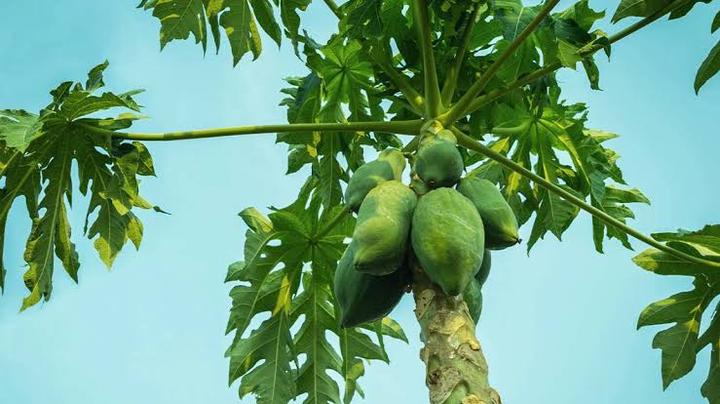
Pawpaw, also known as papaya, is a popular fruit that is enjoyed all around the world. However, many people are unaware of the numerous health benefits that pawpaw leaves offer. Boiling pawpaw leaves and drinking the water regularly in moderation can be highly beneficial for your overall health. In this article, we will discuss the reasons why you should boil pawpaw leaves and drink the water regularly in moderation.....Read Full Article>>
1. Boosts Immunity
According to WebMD. Pawpaw leaves are rich in antioxidants, vitamins, and minerals that can help to boost your immune system. Drinking pawpaw leaf water can help to protect your body from harmful pathogens and infections.
2. Anti-inflammatory properties
Pawpaw leaves contain papain and chymopapain, two enzymes that have potent anti-inflammatory properties. Drinking pawpaw leaf water can help to reduce inflammation in the body, which can help to alleviate a wide range of health conditions, including arthritis and joint pain.
3. Lowers Blood Sugar Levels
Pawpaw leaves contain compounds that have been shown to help regulate blood sugar levels. Drinking pawpaw leaf water can be highly beneficial for people with diabetes or those who are at risk of developing diabetes.
4. Helps with Digestion
Pawpaw leaves contain papain, an enzyme that can help to break down protein in the body. Drinking pawpaw leaf water can help to improve digestion and alleviate digestive issues such as constipation, bloating, and indigestion.
5. Reduces Risk of Cancer
Pawpaw leaves contain acetogenin, a compound that has been shown to have anti-cancer properties. Drinking pawpaw leaf water can help to reduce the risk of cancer and protect the body from harmful cancer-causing agents.
6. Good for Skin Health
Pawpaw leaves are rich in vitamin C, which is essential for skin health. Drinking pawpaw leaf water can help to improve skin elasticity, reduce wrinkles, and promote a healthy, glowing complexion.
7. Reduces Stress and Anxiety
Pawpaw leaves contain compounds that have a calming effect on the body. Drinking pawpaw leaf water can help to reduce stress and anxiety, promote relaxation, and improve sleep quality.
Boiling pawpaw leaves and drinking the water regularly in moderation can be highly beneficial for your overall health. It can boost your immune system, reduce inflammation, regulate blood sugar levels, improve digestion, reduce the risk of cancer, improve skin health, and promote relaxation. However, it is essential to consume pawpaw leaf water in moderation and consult with your healthcare provider before adding it to your diet
Health
Why Drinking Bitter Leaf Water Can Be Dangerous
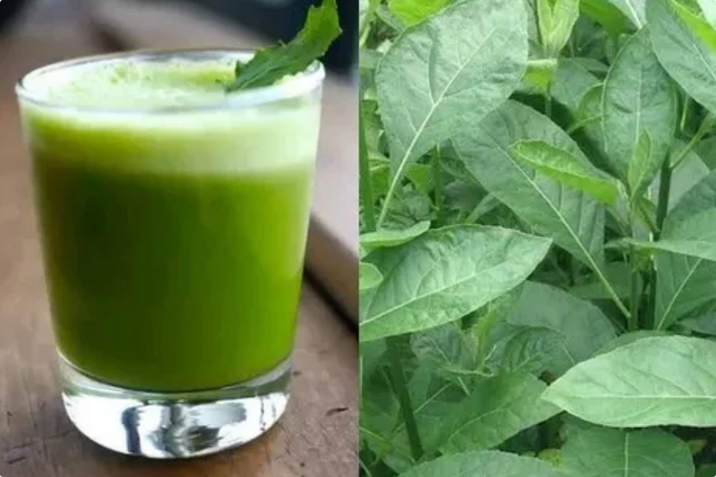
Bitter leaf water, derived from the leaves of the bitter leaf plant (Vernonia amygdalina), has gained popularity for its purported health benefits. However, it is essential to explore not only its advantages but also potential drawbacks that may arise from its consumption.....Read Full Article>>
1. Bitter Taste:
As the name suggests, bitter leaf water possesses a strong and distinct bitter taste, which can be. unappealing to many individuals. This taste may deter people from incorporating it into their regular diet, affecting their willingness to reap its potential benefits.
2. Potential Allergic Reactions:
Some individuals may be allergic to compounds found in bitter leaf water, leading to adverse reactions such as itching, swelling, or difficulty breathing. It is crucial to exercise caution and consult with a healthcare professional if allergic reactions are suspected.
3. Medicinal Interactions:
Bitter leaf water is often consumed for its medicinal properties, but it may interact with certain medications. Individuals taking specific drugs should seek advice from their healthcare provider to prevent any potential adverse effects resulting from drug interactions.
4. Over consumption and Digestive Issues:
Excessive consumption of bitter leaf water may lead to digestive issues, including nausea, diarrhea, or stomach cramps. It is crucial to maintain moderation in intake and monitor one’s body’s response to avoid discomfort.
5. Not Suitable for Everyone:
Pregnant women and individuals with certain medical conditions may need to exercise caution when considering bitter leaf water consumption. It is advisable for such individuals to consult their healthcare provider to determine whether it is safe for them.
6. Lack of Scientific Evidence:
While bitter leaf water is traditionally believed to have various health benefits, there is a notable absence of extensive scientific research validating these claims. Relying solely on traditional beliefs without robust scientific evidence may pose a risk of overlooking potential drawbacks or side effects.
Conclusion:
While bitter leaf water is celebrated for its potential health benefits, it is essential to approach its consumption with caution. Individuals should be mindful of the potential disadvantages, including allergic reactions, digestive issues, and medication interactions. Consulting with a healthcare professional before incorporating bitter leaf water into one’s diet is advisable to ensure that it aligns with individual health needs and circumstances.
Health
A Very Good Natural Medicine For High Blood Pressure And Cholesterol
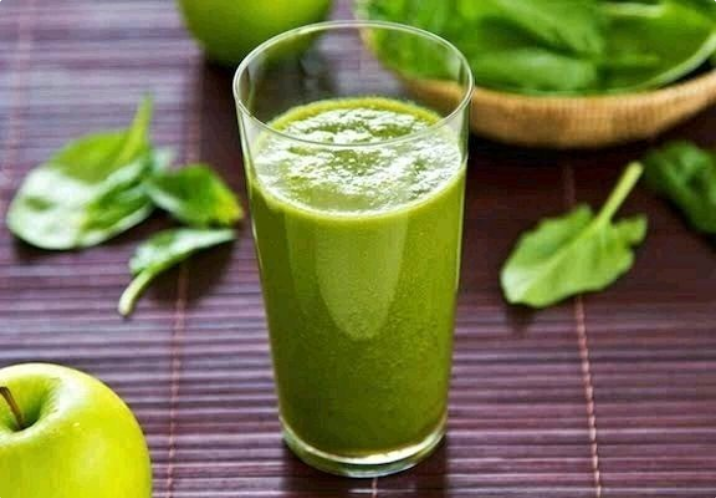
Supposing that you suffer from high cholesterol or high blood sugar levels, the following traditional Amish remedy is the miracle that you have been searching for! Moreover, it is amazing for your overall health, because it boosts the immune system and treats various other health problems.....Read Full Article>>
This is how you can prepare this natural health bomb:
Ingredients needed:
– 1 piece of ginger (grated)
– 1 teaspoon of lemon juice
– 1 garlic clove (grated)
– 1 teaspoon of apple cider vinegar
– 1 teaspoon of organic honey
Instructions for preparation:
You need to simply mix all the ingredients. Then, refrigerate the mixture for about 5 days.
Usage:
After the 5 days, consume this remedy two times a day, in the morning, before the breakfast, and in the evening, before dinner. Do not take it more than 3 times daily.
After just a week, you are going to experience miraculous effects! The blood pressure is going to be normalized, as well as the blood sugar and cholesterol levels. In addition, your entire body will be much healthier
-

 Latest News1 month ago
Latest News1 month agoBREAKING: Journalist Who Exposed Army Chief Lagbaja’s Death In Serious Trouble As Military Reportedly Issues Unexpected Order
-

 Latest News3 days ago
Latest News3 days agoBREAKING: Finland To Sue Tinubu For Falsely Accusing Simon Ekpa? See Facts As Biafrans’ Claim Goes Viral
-

 Latest News2 months ago
Latest News2 months agoSUNDAY Turns BLOODY As Simon Ekpa’s Boys Reportedly Slaughter Dozens Of Soldiers; SEE Details
-

 Latest News16 hours ago
Latest News16 hours agoTake Care of Yourself See How Man Slumps, Dies While Walking
-

 Health2 months ago
Health2 months agoBitter Leaf Water is Not For You, Should Stop Drinking If You Belong to These Category
-

 Latest News3 days ago
Latest News3 days agoBREAKING: Filling Station To Adjust Their Pumps As NNPC Announces News Fuel Price; Details Below
-

 Latest News4 days ago
Latest News4 days agoJUST IN: The Pastor Of Dominion City Church, David Ogbueli Calls Out 100 People During Service And Gives Them N10m
-

 Latest News2 months ago
Latest News2 months agoMohbad’s Wife Is PREGNANT? – Late Singer Wife Finally Breaks Silence On Viral Report, Here’s What She Said
































































